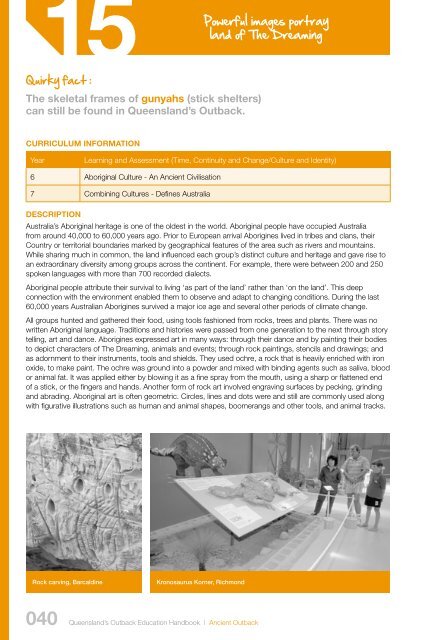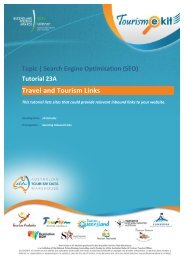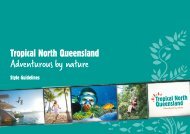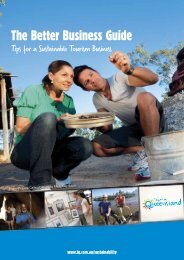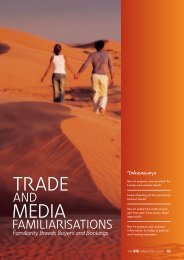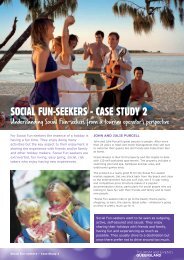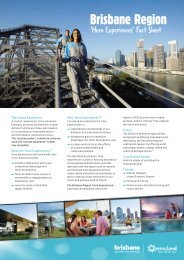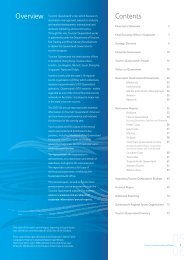Outback Education Handbook PDF - Tourism Queensland
Outback Education Handbook PDF - Tourism Queensland
Outback Education Handbook PDF - Tourism Queensland
Create successful ePaper yourself
Turn your PDF publications into a flip-book with our unique Google optimized e-Paper software.
15<br />
Powerful images portray<br />
land of The Dreaming<br />
Quirky fact :<br />
The skeletal frames of gunyahs (stick shelters)<br />
can still be found in <strong>Queensland</strong>’s <strong>Outback</strong>.<br />
Curriculum Information<br />
Year<br />
Learning and Assessment (Time, Continuity and Change/Culture and Identity)<br />
6 Aboriginal Culture - An Ancient Civilisation<br />
7 Combining Cultures - Defines Australia<br />
Description<br />
Australia’s Aboriginal heritage is one of the oldest in the world. Aboriginal people have occupied Australia<br />
from around 40,000 to 60,000 years ago. Prior to European arrival Aborigines lived in tribes and clans, their<br />
Country or territorial boundaries marked by geographical features of the area such as rivers and mountains.<br />
While sharing much in common, the land influenced each group’s distinct culture and heritage and gave rise to<br />
an extraordinary diversity among groups across the continent. For example, there were between 200 and 250<br />
spoken languages with more than 700 recorded dialects.<br />
Aboriginal people attribute their survival to living ‘as part of the land’ rather than ‘on the land’. This deep<br />
connection with the environment enabled them to observe and adapt to changing conditions. During the last<br />
60,000 years Australian Aborigines survived a major ice age and several other periods of climate change.<br />
All groups hunted and gathered their food, using tools fashioned from rocks, trees and plants. There was no<br />
written Aboriginal language. Traditions and histories were passed from one generation to the next through story<br />
telling, art and dance. Aborigines expressed art in many ways: through their dance and by painting their bodies<br />
to depict characters of The Dreaming, animals and events; through rock paintings, stencils and drawings; and<br />
as adornment to their instruments, tools and shields. They used ochre, a rock that is heavily enriched with iron<br />
oxide, to make paint. The ochre was ground into a powder and mixed with binding agents such as saliva, blood<br />
or animal fat. It was applied either by blowing it as a fine spray from the mouth, using a sharp or flattened end<br />
of a stick, or the fingers and hands. Another form of rock art involved engraving surfaces by pecking, grinding<br />
and abrading. Aboriginal art is often geometric. Circles, lines and dots were and still are commonly used along<br />
with figurative illustrations such as human and animal shapes, boomerangs and other tools, and animal tracks.<br />
Rock carving, Barcaldine<br />
Kronosaurus Korner, Richmond<br />
040<br />
<strong>Queensland</strong>’s <strong>Outback</strong> <strong>Education</strong> <strong>Handbook</strong> | Ancient <strong>Outback</strong>


